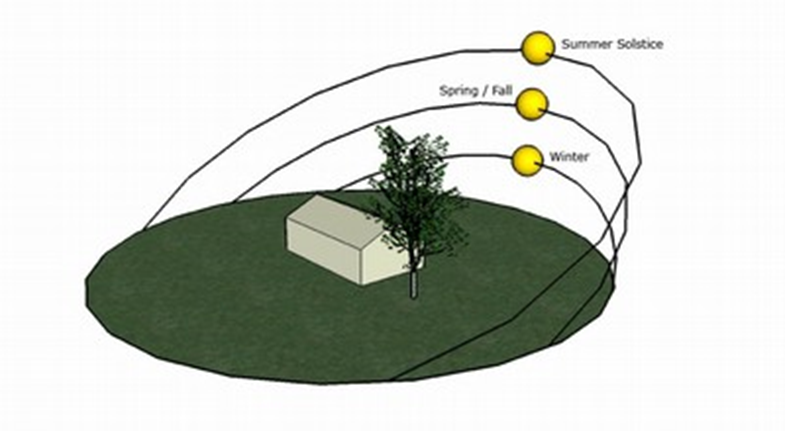|
25 JANUARY 2021
Choosing Solar Panel Azimuth and Angle: Maximize Your Solar Gain by Properly Positioning Your PanelsChoosing the right azimuth and angle for your solar panels can make the difference between solar pain and solar gain. Luckily, with a bit of planning you can easily optimize your system. Azimuth refers to the cardinal direction your panels face, e.g. north, east, etc. Angle refers to the tilt that your panels sit at, with 0° being a panel lying flat and 90° being a panel standing straight up.
HOW TO DETERMINE THE OPTIMUM AZIMUTH FOR YOUR SOLAR COLLECTORS AND PANELSDetermining your ideal azimuth is relatively easy. In order to maximize your solar gains throughout the day you’ll want your collectors facing the equator. That means south for all of us in the northern hemisphere. This ensures that your collectors will always be facing the sun as it tracks across the sky.
If you're unable to mount your panels so they face directly south then there are a few options available to mitigate the reduced solar gain. For solar thermal systems, evacuated tube collectors are less effected by off-south facings. Due to the spherical nature of evacuated tubes, they can be positioned up to 45° off-south and still function at a high level of efficiency, however more drastic angles will still result in poorer solar performance. If you have to choose between facing your panels east or west, then have consider your energy usage and whether you use more energy in the morning or afternoon. Panels facing eastwards will receive plenty of energy in the morning as the sun rises but little to no energy after solar noon, depending on the tilt. The reverse is true for panels facing westwards; they’ll receive plenty of energy as the sun sets but almost none before solar noon. This can be advantageous for certain PV systems. If you're selling energy back to the grid at significantly less than you're buying it then it's better to use your energy as you generate it rather than sell it back to the grid. Most households' energy use spikes in the morning and evening, the same time that east and west facing panels are producing the most energy. In this situation, while overall your east and west facing panels will generate less energy than south facing panels, but they may save you more money. The table below sums up what you can expect from facing your panels in each of the four cardinal directions.
HOW TO DETERMINE THE OPTIMUM TILT FOR YOUR SOLAR COLLECTORS AND PANELSThe optimal angle for your solar panels depends on your latitude and energy use habits. If you followed our previous article and checked your solar insolation, then you should know the angle that will give you the most year-round energy for your latitude. However, you should also take into consideration your energy use throughout the year. Steeper angled panels will generate more energy during winter and less during summer, whereas flatter angled panels will generate more energy during summer and less during winter. Therefore if you use more energy in winter than summer, then you should consider a steeper angle.
For example, if you're using a solar thermal system to heat your domestic hot water then you'll likely find that you should concentrate on maximizing your year-round solar gain. Domestic hot water usage tends to stay pretty constant over the year so it makes little sense to prioritize summer or winter production. However, if you know that your domestic hot water usage varies considerably throughout the year, maybe your property is a holiday house you only visit in summer, then a lower tilt will result in more solar gain. If you're using your solar thermal system for space heating then you'll use much more heat in winter, so a steeper tilt is recommended. The table below shows the efficiency you can expect from south facing panels tilted at various angles throughout the year, with 100 % being the most effective angle for any given month. The data was gathered at a latitude of approximately 51° N.
The chart below shows the energy generated by a south facing 30 evacuated tube collector at various angles at a latitude of approximately 51° N
Finally, remember that when calculating the angle of your panels, you have to add together both the angle from your mounting kit and the angle of the surface you're mounting your panels on in order to get your total angle. For example, if your roof is 15° and your mounting kit is 30°, then the angle of your panels will be 45°. |
SEARCH
FOLLOW SIMPLE SOLAR
|





